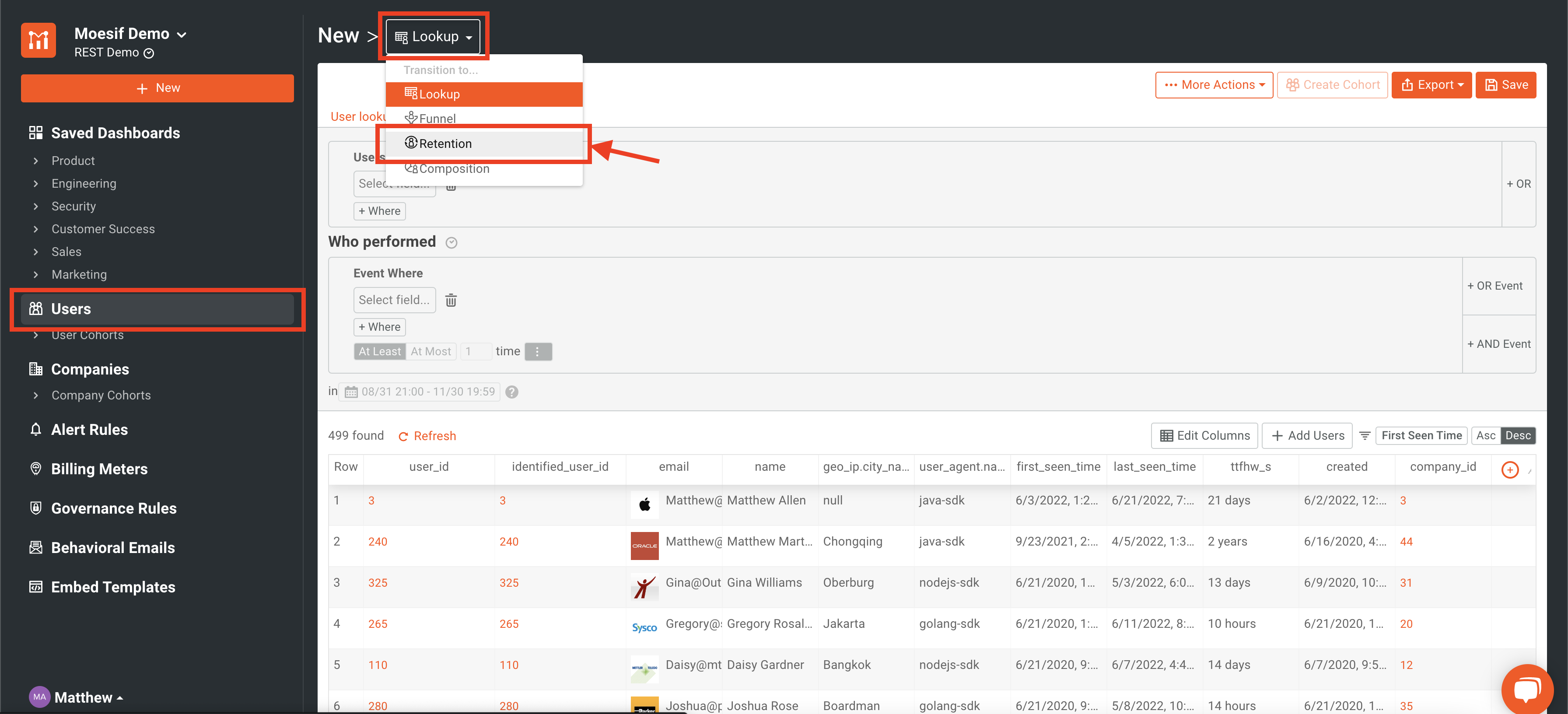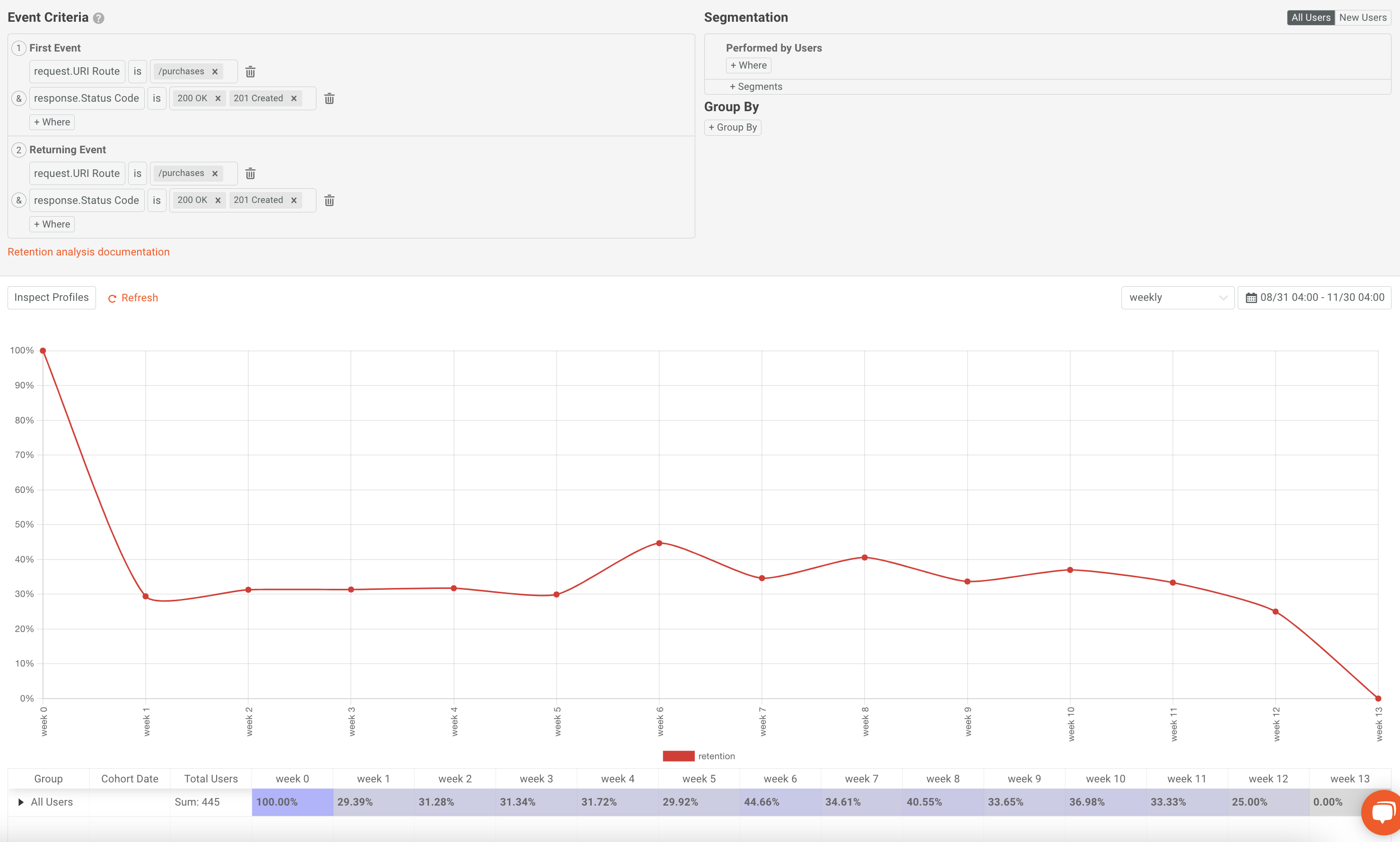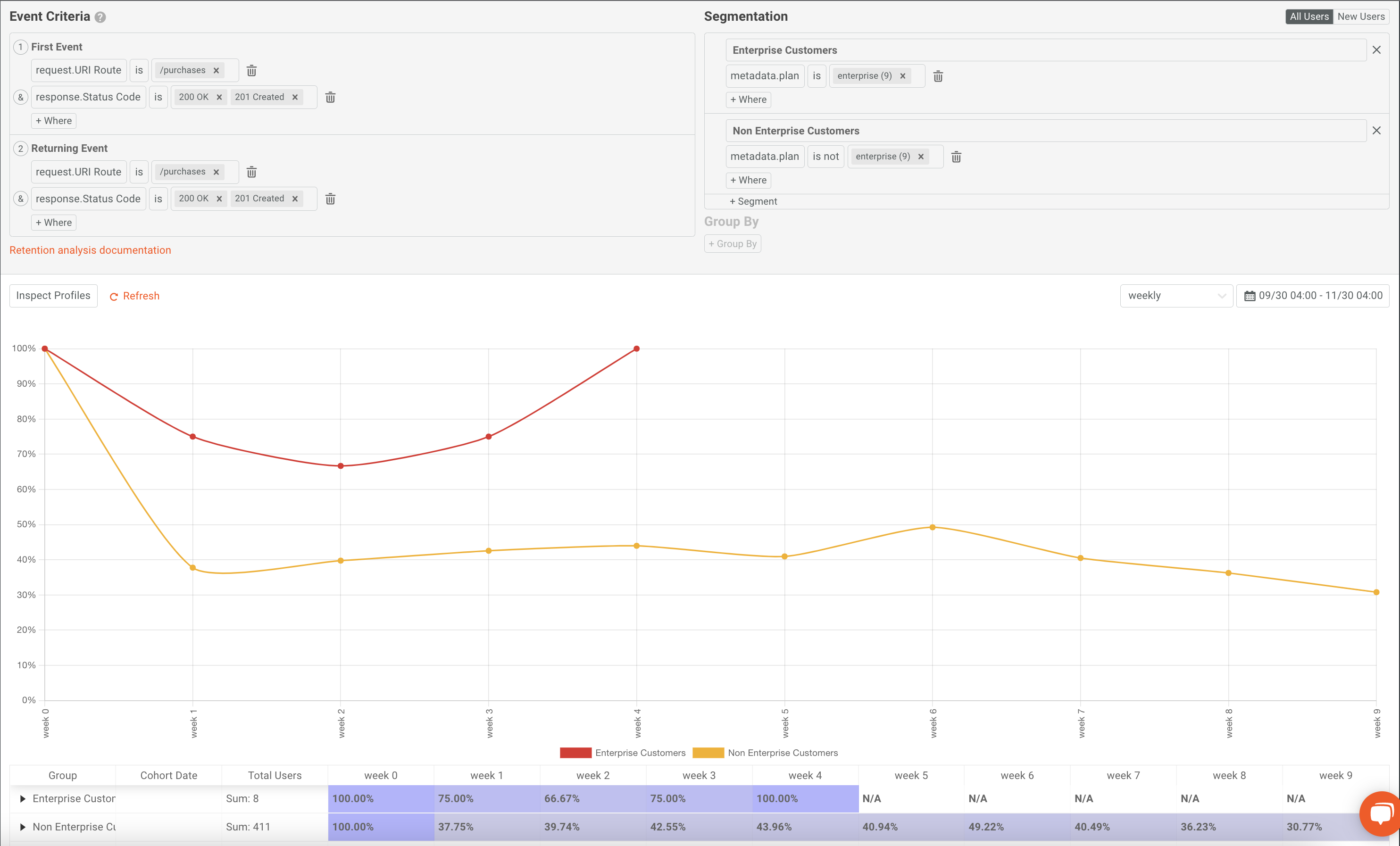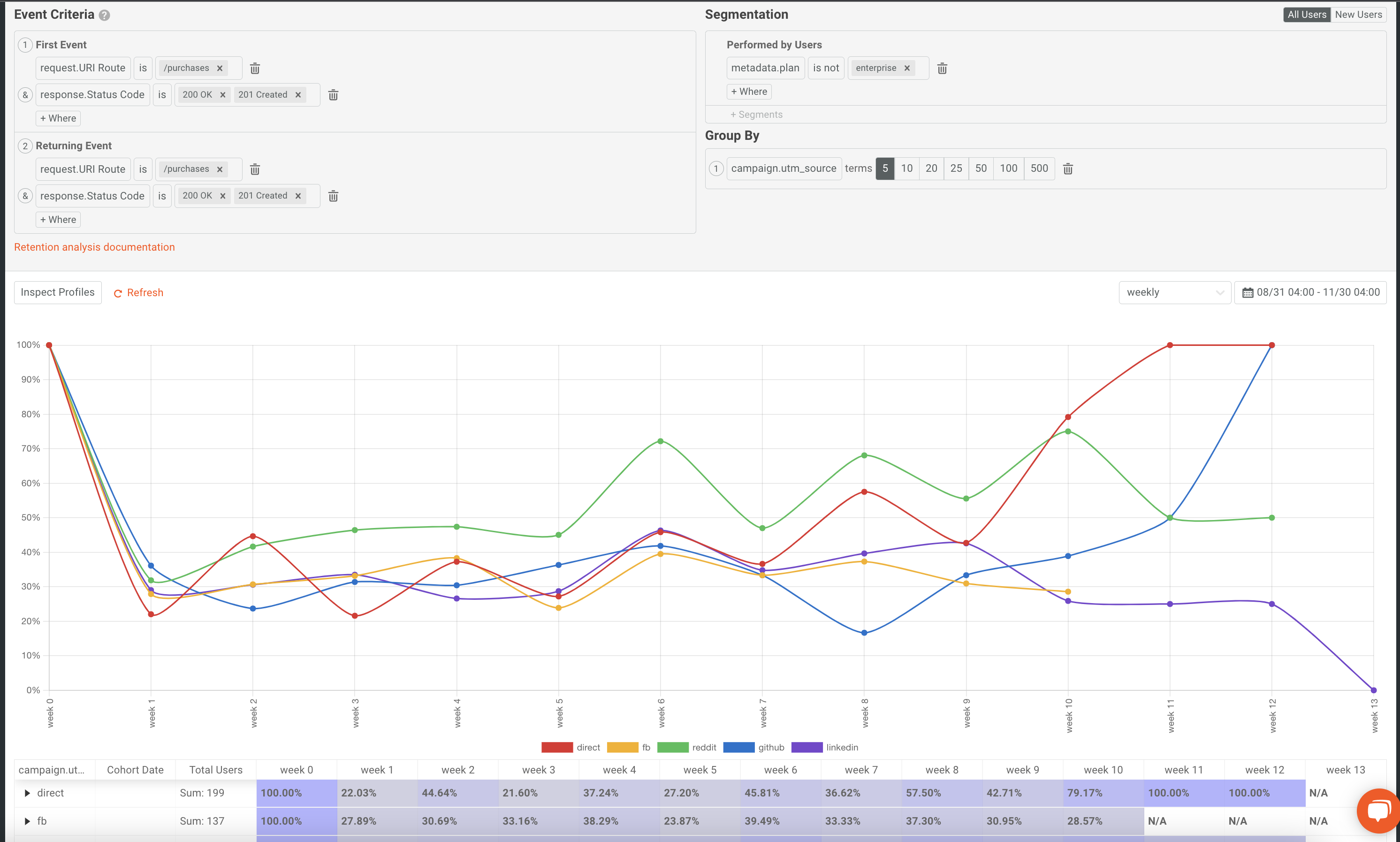What is Product Retention and How Can You Improve It?
Product retention is an extremely important metric to check the health of your business. Calculating the retention rate of your business will return the percentage of users who continue using your product or service over a given time period. Retention can really be seen as a gauge for customer loyalty and a good reflection of the quality of your customer relationship with a new or existing customer. How to increase customer retention is a huge concern for many businesses and developing a great customer retention strategy is the best way to solve it. Being great at customer acquisition is only meaningful if you can also manage to keep your customer churn low and continue retaining customers.
A low customer retention rate can be a major indicator of something being wrong with your product, including too high of a price for the value the product delivers. A high customer retention rate means your current customers value your product and the continued usage of the product leads to a sustainable source of revenue. Retention Analysis is quite easy to perform but using a platform like Moesif to create one is the best way to track customer retention over time. Let’s take a look at the specifics of each part of a retention report and how to create and interpret them in Moesif.
Product Retention for API-first businesses
Measuring product retention is a bit different if your business is an API. Measuring logins to your developer portal may not be accurate as typically developers don’t log into admin portals daily or weekly. The best way to measure retention for API products is through consistent API activity. However, not all API traffic is equal. Using API traffic as the basis for your retention report requires considering traffic that creates value for the customer and not just including any API call. The traffic that brings customers value may be the same events that you charge on if you have a usage-based billing model. Customers of API businesses may be using different APis to meet different requirements, this means you’ll likely want a way to filter down on specific fields or volume a customer may be sending. For example, 4xx or 5xx HTTP error response codes shouldn’t be considered in retention reports as these are typically error conditions and can skew a retention analysis.
Determining First Event and Returning Events
When we are looking at customer retention, there are 2 important events that are used to determine if a user is being retained. The initial event is known as the “First Event” and this will be where your retention report starts. The First Event can be determined by determining when a user first receives value from the product. With an e-commerce platform, this could be the first time the user actually creates a purchase order. If you are a communications platform, the first event may a user sending a text message through the platform. You could also generalize this to be any API call.
The second part of the retention analysis is when a user performs a Returning Event, signaling that they are a repeat customer. The returning event is when a customer returns back to the platform and performs an event where they receive value from the product. Typically, this is the same type of event that was performed in the First Event, but it could be something completely different. Every time a user performs the Returning Event they are considered a retained user. When a user no longer performs the Returning Event, the user is no longer retained and likely is no longer using the product.
Creating a Retention Report in Moesif
Creating a Retention Report in Moesif is easy to do. The first step is to navigate to the Users screen. Once on the screen, the next thing you will do is pick Retention from the dropdown in the top left of the screen.

Now on the Retention screen, you can specify both the First Event and the Returning Event. In this example, we will be looking at creating a simple retention analysis where the First Event and Returning Event will be when a user makes a purchase and a repeat purchase on the platform. We will also make sure to only include successful checkouts by specifying that the response Status Code is equal to 200 or 201, denoting a successful call. Below is what it would look like in Moesif.

In Moesif, if events are not specified, Moesif will calculate the retention based on any event being received for that user. This can sometimes be useful but is generally more accurate to pick specific First and Returning events. As you can see, Moesif automatically creates a chart that plots out the customer retention curve.
Adding in Segmentation and Grouping
To break down the retention report even further, we can also look at adding segmentation and grouping to the data.
For segmentation, we may want to only include retention for customers who performed a certain action or belong to a certain segment of our customer base. For example, building on top of the example we built before, we may add a segmentation clause where we want to look at the differences in retention for both Enterprise and Non Enterprise customers. For that, we will add in segments for to distinguish between both types of customers. And example can be seen below.

Another angle to look at the analysis from is to use the Group By capability. This allows us to see what the retention looks like across different groupings of users. For example, we can change the previous example to only look at Non Enterprise customers and add a Group By to group the customers within this segment by UTM Source. This will show us what customer retention looks like for users depending on what UTM source they came from. This could help us to see which tactics are working and which ones aren’t when it comes to creating loyal customers. Here’s what that would look like.

With these two additional features, we can really dig into each aspect of customer retention and infer deeper and more specific insights than we could without segmentation and grouping.
Interpreting the Retention Report
When actually looking at a retention report, it’s important to know what you are looking at. There are a few scenarios that show healthy retention and others that show unhealthy retention or retention that could use improvement.
Retention is high/optimal
The optimal retention rate varies by industry so it’s hard to say exactly where you want your retention rate to land. This being said, there are plenty of studies that show average retention by industry including this one done in 2020 by ProfitWell. Inside this report we can see the following average retention rates by industry:
- Retail: 63%
- Banking: 75%
- Telecom: 78%
- IT: 81%
- Insurance: 83%
- Professional services: 84%
- Media: 84%
Depending on your industry, you obviously want to make sure that your retention curve begins to flatten quickly and stays roughly around these targets. It’s also important to take a look at what you are doing to have retention be so high and continue to do so to keep loyal customers retained. If retention starts to drop as you make changes to onboarding, business processes, marketing, and other factors, you may want to look at reverting back to tactics when retention was higher. Likely the experience of your service or app is not meeting the customer expectation. Your customer retention strategy should always aim to keep retention as high as possible.
Retention drops off quickly
If retention drops quickly to low levels, this usually means that customers are not satisfied with the product or are not getting the value out of the product to justify returning. If you are looking at retention on a monthly level and by the second month retention is dropping significantly, you may want to look at retention in a smaller time segment, such as weekly or even daily. With poor retention, the silver lining is that small changes may lead to massive differences. When retention is poor, you’ll want to continue to keep a close eye on potential improvements since low retention can spell disaster for many businesses.
The retention report doesn’t show much history
If your business has only been around for 4 weeks or you’ve only been tracking retention for 4 weeks, it’s tough to look at retention on a 12-month basis since the data doesn’t exist. If you find that your retention report stops sooner than you’d expect, you’ll need to make sure that you have enough data to support the time span that you are trying to look at. If your data is limited, consider using a smaller unit of time such as looking at retention on a daily or weekly basis until your data grows big enough to assess at a monthly or yearly level.
Of course, every company is going to have different expectations for where their retention should be. You will likely fall into one of the three categories mentioned above, maybe even multiple. Once you’ve assessed your retention, the next step is to either maintain it or, more likely, aim to improve it. Next, let’s look at some ways that retention can be improved.
Tips for Improving Retention
Retention can be a bit of a puzzle but tracking the metrics around retention is the first step to improving it. There are plenty of ways to try and improve retention, some may be more applicable than others depending on what industry you are in. Here are a few customer retention strategies that you can try out to build your customer base out of more loyal customers.
Refine Your Onboarding Process
Nothing scares a new customer off more quickly than a bad customer onboarding process. It’s hard to retain customers if they never fully get onboarded and find value in your product. This is why improving your onboarding can be the single best way to improve your user retention. A great onboarding experience usually leads to a great customer experience that quickly delivers solutions for customer needs. To see how your onboarding process looks like in its current state, you may want to look at metrics such as:
- How many users are beginning the onboarding process and not finishing?
- Where most people are abandoning the onboarding process?
- At what point in the onboarding process are users more likely to follow through to the end?
An extremely complex and long onboarding process can quickly kill retention. The shorter the time it takes for a user to find value, the more impactful your onboarding will be. To dig into onboarding with Moesif, you may want to use our User Funnels feature to look at each step in the onboarding process, how many folks convert to the next step, and how long it takes to complete each step. A better onboarding experience could be the secret to really boosting retention through improving overall customer experience.
Engage customers through customer feedback surveys
Great customers who enjoy your product can answer some of the questions around why they continue to use your product. Customers who dropped off your product can also offer just as much insight. Getting customer feedback via a customer survey for both types customers can unlock insights into why users are staying and leaving, the core of the retention equation. Using a customer survey to to build up qualitative customer data can help you figure out how happy customers have established their brand loyalty.
For users who are staying, it’s important to ask questions about what they like the best about the product, information about what demographics they are part of, and what parts of the product would potentially get them to leave (this could be questions around features, reliability, or even price). Once you’ve discovered what is keeping users around and find some trends, you can double down to try and spread these good vibes to new and other existing customers. As for negative feedback, this could be prioritized to make sure issues are resolved which could lead to a boost in retention.
More importantly, especially if your retention is already low, is figuring out why previous users are leaving the platform. In a short survey, you could ask these customers why they left and what it would take to get them to return. This should give you insight into issues and potential solutions, setting you on the right path to improve the product and hopefully bump up retention. Once the product is improved, you may even think to reach back out to these previous users to let them know their feedback has been listened to and you’d love to have them try out your new and improved experience.
Customer feedback surveys can be an extremely effective way to get succinct feedback to some of your biggest customer experience and retention problems and likely help you uncover issues that you never even knew about that are impacting customer satisfaction.
Don’t stop marketing once a customer is acquired
Many companies stop marketing once they have someone signed up, onboarded, and using the product. Logically this may make sense, but in practice, it couldn’t be further from the truth. You should always aim to be engaging users to keep your product and services top-of-mind. This could include newsletters, product release notes, and other great content to keep users engaged and discovering new value within your product. Keeping in touch with customers and continuing to market your product is a great way to get customers to return to the product and discover new ways to unlock value with it. This should be a cornerstone in almost all customer retention strategies that businesses implement.
A big caveat to this approach is to make sure that you are using smart automation to continually market to existing customers. Using personalized emails that contain content relevant to the user is crucial to maintaining the line between receiving value and being annoyed. Using events from within your application to drive specific emails can be a great way to do this, such as when a user uses a feature for the first time and you email them an overview or link to the docs so that they can dig deeper if they want. In Moesif, doing this type of email marketing can be done through the use of Behavioral Emails where you can trigger specific emails based on application usage or specific events or customer behavior within the application. This can act as a way to keep marketing to existing customers while also making sure that you are offering great automated customer support. You should also make sure that the volume of emails being sent are not overwhelming to users, potentially getting you on the blocked or unsubscribed list.
Improving Retention With Moesif
Now that you know what retention is, why it’s important, and a few tips on how to potentially improve it, you can start tracking customer retention metrics using Moesif. Aren’t using Moesif yet? sign up today to get started and in a matter of minutes begin tracking and improving customer retention and customer loyalty. Whether you are using our Retention Analysis to see track your customer retention rate or using Behavioral Emails or other features to help increase customer retention, Moesif can help to supercharge your customer success and retention. Let Moesif help you build a customer retention strategy that works since retaining a loyal customer is the most efficient way to build revenue and increase customer lifetime value.






